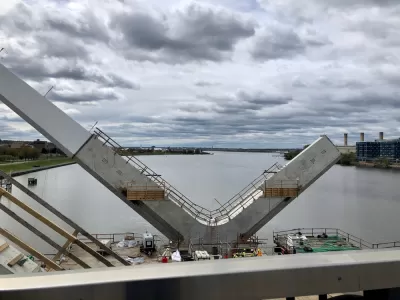A wonky policy tool can have significant effects on how public and private money is spent.

Writing in Vox, Kelsey Piper explains an obscure policy tool, set by the federal Office of Management and Budget (OMB), whose impacts can reverberate across generations. “The discount rate basically tells us how to value the future versus the present — and thus has tremendous implications for the policies we enact today,” Piper writes.
High discount rates mean that we, as a society, are willing to trade off the future for the present: that we’ll generally prefer policies that benefit us now over policies with long-term benefits that won’t be realized immediately. Low discount rates mean that we, as a society, are willing to make investments that won’t be realized for a long time.
By proposing to lower the discount rate from 3 percent to 1.7 percent recently, the OMB is essentially putting more value on future returns. According to Piper, this small change could have a major impact on how money is spent. Piper uses carbon as an example. “Just a small shift to a lower discount rate significantly changes what trade-offs we are willing to make — because with a lower discount rate, we care more about the effects of carbon on the world our grandchildren live in.”
See the source article for a detailed explanation of how the discount rate works and other new information in the OMB’s recent analysis.
FULL STORY: The one number that determines how today’s policies will affect our grandchildren

Planetizen Federal Action Tracker
A weekly monitor of how Trump’s orders and actions are impacting planners and planning in America.

The Simple Legislative Tool Transforming Vacant Downtowns
In California, Michigan and Georgia, an easy win is bringing dollars — and delight — back to city centers.

San Francisco's School District Spent $105M To Build Affordable Housing for Teachers — And That's Just the Beginning
SFUSD joins a growing list of school districts using their land holdings to address housing affordability challenges faced by their own employees.

In More Metros Than You’d Think, Suburbs are Now More Expensive Than the City
If you're moving to the burbs to save on square footage, data shows you should think again.

The States Losing Rural Delivery Rooms at an Alarming Pace
In some states, as few as 9% of rural hospitals still deliver babies. As a result, rising pre-term births, no adequate pre-term care and "harrowing" close calls are a growing reality.

The Small South Asian Republic Going all in on EVs
Thanks to one simple policy change less than five years ago, 65% of new cars in this Himalayan country are now electric.
Urban Design for Planners 1: Software Tools
This six-course series explores essential urban design concepts using open source software and equips planners with the tools they need to participate fully in the urban design process.
Planning for Universal Design
Learn the tools for implementing Universal Design in planning regulations.
Smith Gee Studio
City of Charlotte
City of Camden Redevelopment Agency
City of Astoria
Transportation Research & Education Center (TREC) at Portland State University
US High Speed Rail Association
City of Camden Redevelopment Agency
Municipality of Princeton (NJ)





























